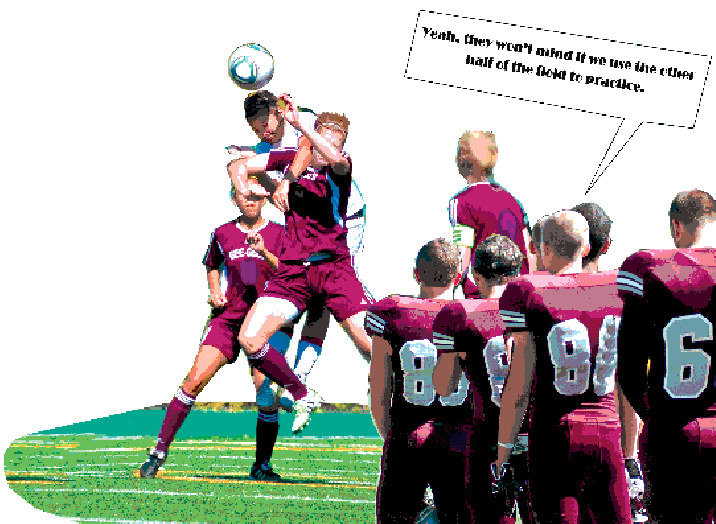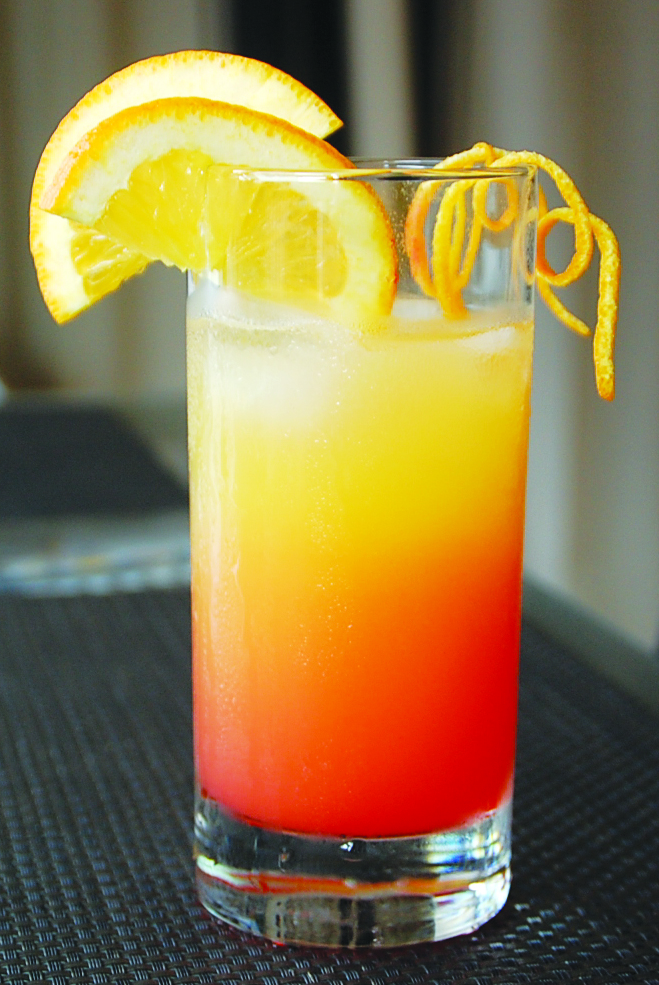
UNIVERSITY ATHLETICS COME in all shapes and sizes. Some athletes play varsity sports, spending most of their year travelling Ontario in hopes of making nationals; some play competitively, competing against teams from across the province without being part of an official league; and others play intramural sports, playing simply for the love of the game.
Each demands intensive scheduling, long hours of training, and, of course, a talent for their respective sport. So why is it that some athletes get all the press and others are treated like amateurs?
The Fulcrum’s sports editor recently attended a men’s soccer game at the University of Ottawa. The team is considered a competitive club, so their season consists of exhibition games played throughout the year. As a simple observer, she noticed some irregularities.
The first was that the scoreboard wasn’t on. At first, it appeared as though the board was broken, but it began working when the women’s varsity soccer team took to the field 45 minutes later, as well as that same afternoon for the women’s varsity rugby team. Instead, the men’s soccer team kept track of who scored by writing it down on a piece of paper to be emailed to interested media outlets.
Apparently, the reservation of Matt Anthony Field does not include the use of its scoreboard. We are not sure why—perhaps it is Sports Services’ responsibility to operate the board, and because they are only answerable to varsity teams, they do not have to be present for men’s soccer. Of course, this is just speculation.
Not having an official scoring system is a regular occurrence for competitive clubs. The rowing team publishes their scores on the Ottawa Rowing Club website instead of Geegees.ca, and the women’s softball team has an assistant coach fill out a score sheet by hand.
The second observation took place mid-game, when a large group of varsity athletes emerged from the Sports Complex onto the few metres of field used to allow spectators to walk from the field entrance to the stands. The men lined the field behind the Gees goalpost and started doing lunges from one end right up to the field boundaries during the game. At one point, the athletes were using the back of the Gees goalpost to balance as they stretched.
These exercises could have been done in the gym, in the parking lot, or if they really wanted a workout, they could have jogged to Strathcona Park. Suffice it to say, we were surprised at the disrespect shown to their fellow athletes—it was almost as if they thought the game was an inconvenience. Have we really become so star-struck by varsity athletes that they are no longer accountable for their actions?
Luckily, the men’s soccer team was able to ignore this breach of space and emerge victorious with a final score of 7-4. Not bad for a team that had 40-plus athletes stretching behind them and a scrap of paper for a scoreboard.
At the end of their game, the soccer team huddled up to discuss their results—nothing abnormal for a sports team. As our sports editor waited to interview the coach, she overheard Sports Services say the team needed to get off the field because their booking time was over. Preparations had to begin for the women’s soccer game, which was set for 45 minutes later.
The final observation can be summed up in one word: Promotion. Although credit must be given to Sports Services for the articles they write on competitive clubs for Geegees.ca, a 500-word write-up that almost no one will read isn’t enough of a promotion for these teams. A tweet, for example, would have sufficed for the soccer game—“The men’s soccer team is playing today at 10:30 a.m. on Matt Anthony Field” would have got the team a few more supporters.
It also shouldn’t be completely up to Sports Services. The university could have sent a message to students using social media or the student federation could have posted it on one of their grandiose calendars.
Competitive clubs can be seen walking around campus with signs saying “shave me for $5” to raise funds. They hold bake sales and host comedy nights. The men’s baseball team has been given the opportunity to use the Fat Cats’ stadium, yet they still have to give out flyers promoting their team. And unless one reads the Fulcrum on a regular basis, would anyone know we have a world champion on our rowing team? Aren’t these athletic accomplishments things the university should want to promote?
Competitive club athletes are athletes, too—they work just as hard and are probably even more dedicated to their team than most varsity athletes. They give up a lot of their time to organize games, let alone to play them. As we’ve already mentioned, athletics come in all different sizes, but each deserves equal respect and support. So we’ll ask you again: Why is it that some athletes get all the press and others are treated as amateurs? To us, it simply doesn’t make sense.
editor@thefulcrum.ca
(613) 562-5261




